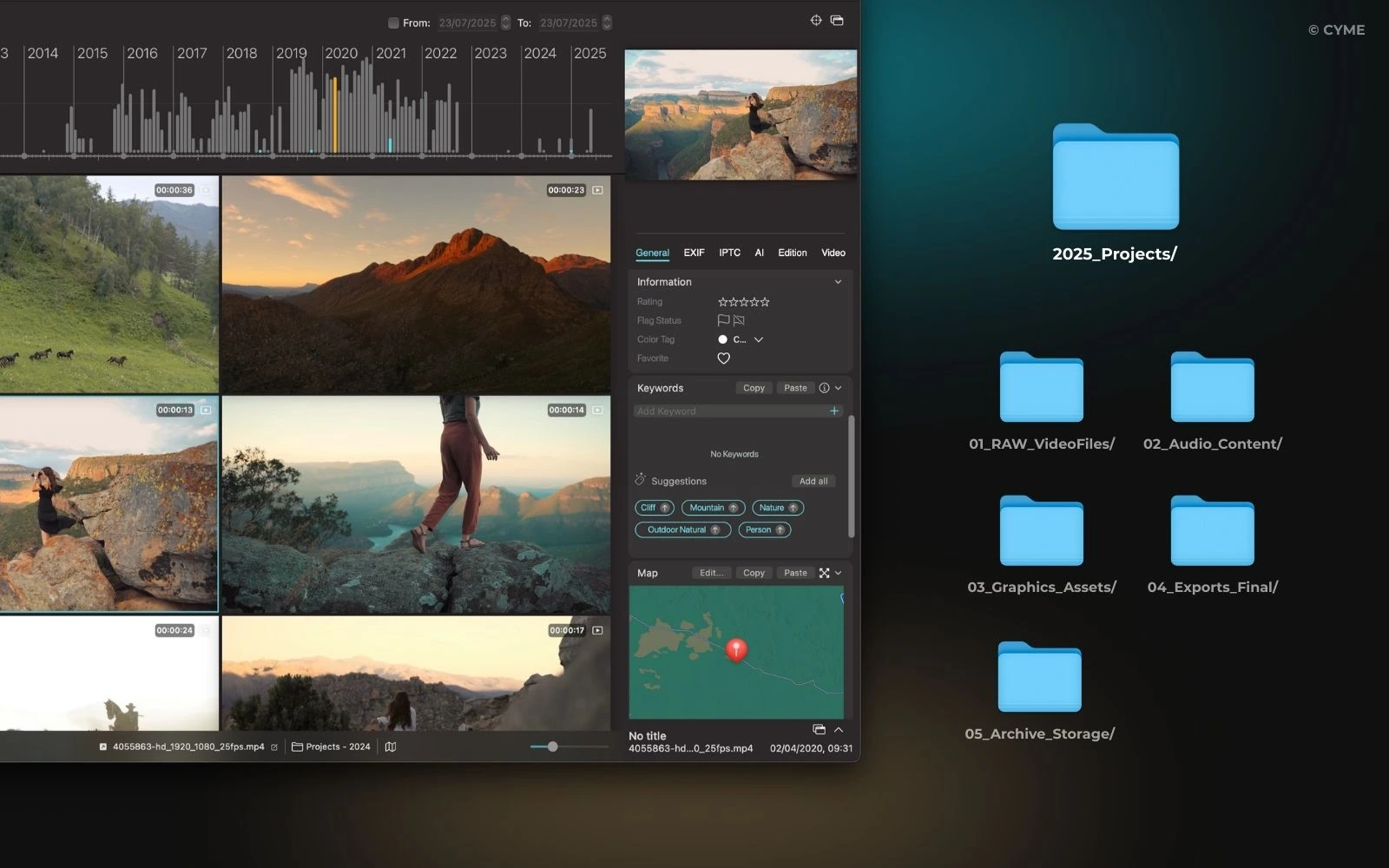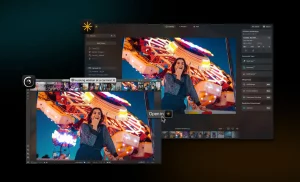Here’s something nobody tells you about being a successful video creator: the footage that made them famous almost got deleted. Three times. The reason? Failing to catalog and store video footage before the chaos took over.
Steven Spielberg’s original E.T. reels sat unlabeled on a shelf for months. Christopher Nolan locks his film in a vault with a cataloging system that would make librarians weep with joy. And that viral TikTok creator you follow? They just spent six hours digging through 47 folders named “Untitled” for a 15‑second clip they shot last Tuesday.
The harsh truth is most creators are wizards with cameras but disasters at file management. They’ll spend $5,000 on the perfect lens yet dump their life’s work into a folder called New Folder (47).
Mastering how to catalog and store video footage is the cornerstone of the best management method for videos, separating the pros from the “where did I put that file again?” crowd.
Ready to stop being your own worst enemy? Let’s turn your digital disaster zone into a content creation machine.
Why Video Cataloging and Storage Matter More Than Ever
The real kicker? While you’re playing hide-and-seek with your own content, your competition is cranking out videos faster than you can say “render queue.” Why? Because they figured out that video management isn’t about being a neat freak—it’s about treating your content like the digital gold mine it actually is.
Here’s what most people don’t realize: proper video storage solutions can literally 10x your productivity. A solid cataloging system transforms your digital video files into a searchable, organized library where every clip has its place and can be found instantly.
This type of management ensures that even large video files remain accessible without slowing down your workflow.

Essential Components of Video Storage Solutions
Cloud Storage
Cloud storage offers incredible convenience and collaboration features. Platforms like Google Drive, Dropbox, and specialized video cloud storage services provide:
- Real-time collaboration capabilities
- Automatic backup and synchronization
- Access files from anywhere with internet
- Built-in sharing and permission controls
Local Storage
The dark secret cloud providers don’t want you to know: nothing beats the raw speed of local storage. External hard drives and NAS systems deliver instant access to your video files without buffering, uploading, or praying to the internet gods.
Local storage gives you complete control and lightning-fast access:
- External hard drives for immediate backup
- NAS (Network Attached Storage) systems for team access
- No monthly fees or data transfer limits
- Complete privacy and security control
Finding Your Balance
The active projects live on external hard drives for lightning-fast editing, while completed projects get archived to cloud storage for long-term safety and team access.
Building Your Video Management System

File Naming Conventions
Enough with the “IMG_1047_final_FINAL_actuallyfinal.mp4” nonsense. Professional video content demands professional naming conventions.
The YRMODA system (Year-Month-Day-Activity) isn’t just a fancy acronym—it’s your ticket to organized bliss:
- 250315_ProductLaunch_Interview_CEOSmith
- 250315_ProductLaunch_Broll_FactorySho
- 250315_ProductLaunch_Graphics_TitleCards
This system automatically sorts your files chronologically and tells you exactly what’s inside without playing video roulette.
Folder Structure That Actually Works
2025_Projects/
├── Q1_ClientWork/
│ ├── ClientName_ProjectTitle/
│ │ ├── 01_RAW_VideoFiles/
│ │ ├── 02_Audio_Content/
│ │ ├── 03_Graphics_Assets/
│ │ ├── 04_Exports_Final/
│ │ └── 05_Archive_Storage/
Keep video, audio, and graphics in separate folders to maintain organization as projects grow. A clear folder system makes it easier to store video files logically, so you always know where to look.
Metadata: Your Secret Weapon for Video Discovery
Metadata transforms your video management from browsing to searching. Modern video storage solutions automatically extract technical metadata (resolution, frame rate, duration), but custom metadata is where the magic happens:
Keywords: Tag content themes, locations, people
Descriptions: Brief summaries of footage content
Categories: Group by project, client, or content type
Usage rights: Track licensing and permission details
Professional video management software can automatically transcribe and translate recordings, making every spoken word searchable. Imagine finding the exact moment in a two-hour interview just by searching for specific keywords!
For a deeper dive into video metadata and its impact on searchability and interoperability, see the ResourceSpace guide on Understanding Video Metadata.
Search and Discovery
Collaboration and Access Control
Backup and Recovery
Protect your files with automated backups and version history. Following a business plan for storage that includes video storage solutions with geographic redundancy provides long-term security for your projects.
Many creators also opt for secure video storage with end-to-end encryption, protecting sensitive projects from unauthorized access.
Workflow Automation
Security and Compliance
Video Editing Integration
Choose storage that connects directly with your editing tools. Adobe Creative Cloud, Google Drive, and Dropbox all integrate seamlessly.
Advanced Video Management Features Worth the Investment

AI-Powered Content Recognition
AI can automatically tag faces, objects, and scenes in your footage. Type “blue car” and instantly find every clip across your library. Enterprise-level video management software often combines these tools with compliance-ready frameworks like CMS and MAM systems, ensuring scalability for large organizations.
Automated Transcription and Translation
Version Control and Collaboration
Scalable Storage
The Organization Habits That Separate Pros from Amateurs

Immediate Post-Production Habits - The Golden Hour Rule
Regular Maintenance Routines - The Archive Strategy
The Backup Paranoia Protocol
Rule of 3: Every important file should exist in 3 places—active storage, local backup, and cloud archive. Your career depends on never losing critical footage, so embrace the paranoia.
Master your Catalog and Store Video Footage for Long-Term Success
Learning to catalog and store video footage effectively isn’t just about organization—it’s about reclaiming your time, protecting your creative work, and building a sustainable workflow that scales with your ambitions.
Your video storage solution should feel invisible when it’s working correctly. Whether you choose cloud storage, local solutions, or a hybrid approach, the key is consistency and choosing tools that fit your specific needs. Just smooth, efficient access to your creative library whenever inspiration strikes.
For creators ready to take their digital asset management to the next level, Peakto offers an innovative solution that brings all your creative content—photos, videos, and graphics—into one intelligent, searchable library. With its powerful cataloging capabilities and intuitive interface, Peakto makes it effortless to catalog and store video footage alongside your entire creative portfolio, ensuring you’ll never lose track of that perfect shot again.
The future of content creation belongs to the organized. Welcome to the club.













